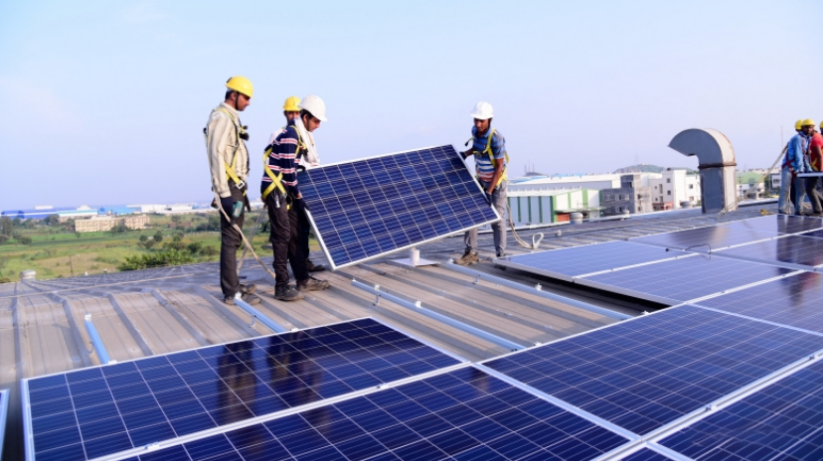
- English
- Español
- Português
- русский
- Français
- 日本語
- Deutsch
- tiếng Việt
- Italiano
- Nederlands
- ภาษาไทย
- Polski
- 한국어
- Svenska
- magyar
- Malay
- বাংলা ভাষার
- Dansk
- Suomi
- हिन्दी
- Pilipino
- Türkçe
- Gaeilge
- العربية
- Indonesia
- Norsk
- تمل
- český
- ελληνικά
- український
- Javanese
- فارسی
- தமிழ்
- తెలుగు
- नेपाली
- Burmese
- български
- ລາວ
- Latine
- Қазақша
- Euskal
- Azərbaycan
- Slovenský jazyk
- Македонски
- Lietuvos
- Eesti Keel
- Română
- Slovenski
- मराठी
- Srpski језик
32GW! Great potential in the household photovoltaic market
2023-11-24
Recently, the Energy, Environment, and Water Resources Commission (CEEW) of India stated that with subsidies from the Ministry of New and Renewable Energy (MNRE), the potential of rooftop photovoltaics for household use in India will reach 32GW.
The research report "Mapping the Potential of Household Roof Photovoltaics in India" by Indian policy research institution CEEW points out that the economic potential of household roof photovoltaics in India is approximately 118GW, provided that the scale of roof photovoltaics is limited to meet household electricity needs.
However, based on consumers' willingness to pay and investment returns within five years, without considering capital subsidies, the market potential of household photovoltaic will decrease to approximately 11GW.

This is because most household consumers have relatively low electricity consumption, which means that even if technically feasible, without financial support, solar energy is not economically feasible for them.
CEEW added that with capital subsidies provided by MNRE, the market potential can increase to 32GW. MNRE announced in 2022 that it will provide a capital subsidy of INR 14558 (US $175.12) per kilowatt for 1-3 kW rooftop photovoltaic projects under the second phase of the MNRE rooftop photovoltaic program.
By extending the payback period to eight years, the potential of rooftop photovoltaics for Indian households can even increase to 68GW, as even with lower electricity usage, more households can recover their investment costs in a longer period of time.
At present, including commercial and household installed capacity, India's rooftop photovoltaic installation has reached 11GW, of which only 2.7GW is in the household sector.
Arunabha Ghosh, CEO of CEEW, said, "From 2GW in 2010 to 72GW of photovoltaic capacity now, India's solar revolution must benefit households in order to fully realize its potential. However, to achieve this goal, residents must receive appropriate prices, attractive incentives, and convenient experiences
To further improve the adoption rate of household rooftop photovoltaics, CEEW suggests introducing targeted capital subsidies, especially for rooftop photovoltaics systems of 0-3kW. In addition, the government can also recognize rooftop photovoltaic systems below 1kW in policies and regulations. CEEW added that this type of household rooftop photovoltaic system has great potential.
In addition, in terms of willingness to install rooftop photovoltaic systems, households in Gujarat have the strongest willingness, reaching 13%, while the average level in India is only 5%. However, residents in various states believe that the investment cost of rooftop photovoltaic systems is high, which affects their willingness to pay.
Countries around the world are installing more rooftop photovoltaic systems. PV Tech reports that in 2022, global rooftop installed capacity accounted for 49.5% of the new capacity, or 118GW.
According to the prediction of SolarPower Europe, a European solar trading agency, the global rooftop photovoltaic industry will reach 268GW by 2027, exceeding the total size of the solar market in 2022.



